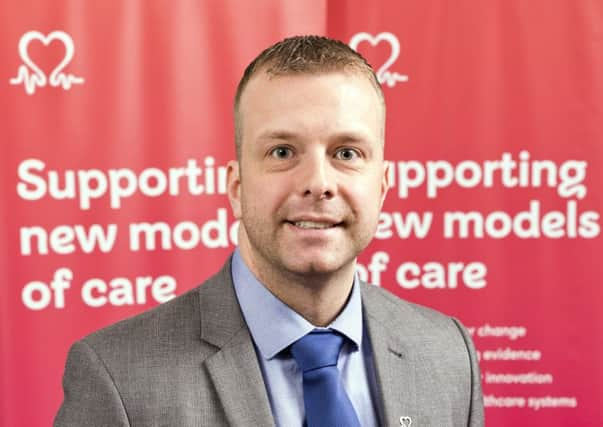Richard Forsyth: Rehab at the heart of post-cardiac event treatment


But being discharged from hospital is not the end of the journey, and this is where cardiac rehabilitation can make a huge difference to both physical and mental well-being.
Usually offered after a cardiac event such as a heart attack, heart surgery or after diagnosis of some other heart conditions, cardiac rehab as it’s known provides the information, support and practical help and advice that people often need to make positive changes to their lifestyle and get their confidence back.
Advertisement
Hide AdAdvertisement
Hide AdResearch shows that taking part in cardiac rehab reduces the risk of dying from further cardiac events and leads to improved quality of life. It can also reduce the anxiety and depression that can often affect people after a heart event.
As our understanding of heart disease has improved, so too has our view of what cardiac rehab should offer. A traditional ‘one size fits all’ model of a time-limited programme based primarily around exercise just doesn’t fit the needs of today’s patients.
More people with heart problems also have other health conditions, sometimes very complex. They’re often looking to get back to work as soon as they can, or they may have other responsibilities, like caring for a grandchild or a partner. It’s simply not possible to design a single programme that can meet the needs of, for example, a 45-year-old marathon runner with a full time job, and a 78-year-old woman with diabetes who’s caring for her husband.
That’s why BHF Scotland is working with the NHS, community partners and the Scottish Government to help redesign cardiac rehab to make sure the individual and their needs are at the heart of the services they use.
Advertisement
Hide AdAdvertisement
Hide AdWe want each patient who is eligible for cardiac rehab to have a holistic needs assessment that focuses on what matters to them in terms of mental, physical and emotional help and support, empowering them to design and undertake their own personalised programme.
There are a number of key factors, including the appropriate assessment protocol, personalised care planning and stronger links with community, leisure and social services. We also need to embrace and embed digital technology where appropriate, with more online and smartphone options to meet individual needs.
To help achieve this transition to a more person-centred approach, BHF Scotland is working with all 14 health boards across the country. A successful pilot is currently running in NHS Lothian and we’re holding a series of workshops with NHS partners this autumn to look at the best way to make the cardiac rehab system even more effective and accessible for each patient, wherever they live. Of course, we’re all very aware that there are huge demands on our NHS and resources are limited, but evidence shows that cardiac rehab is extremely cost-effective, reducing the risk of complications or further unplanned hospital admissions. It can also be a great example of health and social care integration, as people are often accessing resources, organisations and groups that are already established in their community.
To get the most out of cardiac rehab, it’s important that people are informed about how the programme can benefit them, and that they know how and where to ask for support.
Advertisement
Hide AdAdvertisement
Hide AdThat means clinicians need to inform patients so that they understand their heart condition, why it’s happened and what positive changes they can make. Health professionals at all levels should also be enthusiastic advocates for this vital part of the recovery process, encouraging more people to participate.
That’s why cardiac rehab isn’t a time-limited or linear process – we need to make sure it’s person-centred, based on a menu of options and can flex with life’s challenges.
Although an individual’s contact with clinicians and staff might be for a fixed period of time, the positive lifestyle choices they make should last a lifetime. There also needs to be safety nets in place to help people who either aren’t ready to engage straight away, or fall away for a while but want to start again.
Successful cardiac rehab isn’t about ticking boxes or signing people up for exercise classes. It’s about helping people who have had a cardiac event or diagnosis to achieve their individual goals and providing them with access to the support they need to get on with living their lives as fully as possible, whatever that means for them.
Richard Forsyth, health services engagement lead, BHF Scotland.